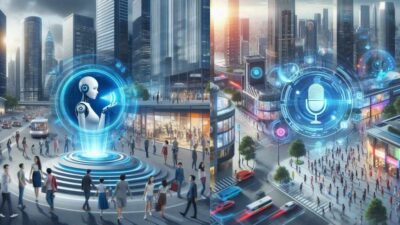
As conversational AI evolves at breakneck speed, 2025 promises groundbreaking advancements that redefine how businesses and consumers interact with technology. Drawing insights from industry reports and expert analyses, here are the six most impactful trends poised to dominate the conversational AI landscape this year:
1. Hyper-Personalized Experiences
Conversational AI is moving beyond generic responses to deliver tailored interactions that mirror human intuition. By integrating real-time data analytics, behavioral insights, and advanced NLP, AI systems now adapt to individual user preferences, purchase history, and even emotional states. For example, retail chatbots suggest products based on browsing patterns, while banking assistants like Bank of America’s Erica offer personalized financial advice . Key drivers include:
- Real-time data integration: Combines CRM, location, and interaction history for context-aware responses.
- Sentiment analysis: Detects frustration or urgency to adjust tone and solutions dynamically .
- Predictive recommendations: Anticipates needs, such as Walmart’s AI suggesting dorm essentials through conversational search .
2. Emotionally Intelligent AI
The next frontier is emotion-aware AI capable of recognizing and responding to human feelings. Powered by sentiment analysis, voice emotion recognition, and affective computing, these systems foster deeper connections. For instance, customer service bots now detect frustration in a user’s voice and respond with calming reassurance, improving satisfaction by 72% . Technologies enabling this include:
- Affective computing: Uses voice tone and facial cues (via sensors) to gauge emotions.
- Context-aware NLP: Interprets sarcasm or urgency in text .
- Empathic responses: Mental health apps like Woebot use emotional AI to provide therapeutic interactions .
3. Multimodal Interfaces
Conversational AI is breaking free from text-only interactions. Multimodal systems blend voice, gestures, images, and text for seamless engagement. Amazon’s Echo Show, for example, pairs voice commands with visual displays, while automotive AI allows drivers to control navigation via gestures . Industries leveraging this trend:
- Healthcare: Patients use voice and video for telemedicine consultations.
- Retail: Virtual assistants guide shoppers with interactive visuals and voice .
- Automotive: In-car systems combine voice, touch, and AR displays for safer driving .
4. AI Co-Pilots and Autonomous Agents
AI is transitioning from assistant to **autonomous collaborator**. Tools like Microsoft Copilot and GitHub Copilot handle tasks ranging from coding to supply chain management, boosting productivity by 70% . Key developments:
- Task automation: Agents resolve IT issues, manage inventory, and draft reports without human input.
- Cross-platform integration: Unified AI agents maintain conversation context across apps like Teams and Slack .
- Low-code development: Platforms like Copilot Studio let non-technical users build custom agents .
5. Voice-First Interactions and Search Optimization
Voice technology is becoming ubiquitous, with 40% of searches expected to be voice-based by 2025. Advances in speech recognition and natural language understanding enable hands-free shopping, safer driving, and inclusive accessibility . Strategies for businesses:
- Voice search SEO: Optimize for long-tail, conversational queries (e.g., “Where’s the nearest coffee shop?”).
- Multilingual support: Real-time translation breaks language barriers in global markets .
- Smart home integration: Control IoT devices via voice commands (e.g., adjusting thermostats through Alexa) .
6. Proactive and Predictive AI
No longer reactive, AI now anticipates needs using behavioral data and predictive analytics. For example, chatbots alert users to subscription renewals or offer discounts before cart abandonment . Applications include:
- Healthcare reminders: AI schedules check-ups based on patient history.
- Retail promotions: Sends personalized offers during peak shopping times .
- Supply chain management: Predicts inventory shortages and auto-orders replacements .
Ready to upgrade? Start with a free trial of Salesix AI and see the difference AI can make.




